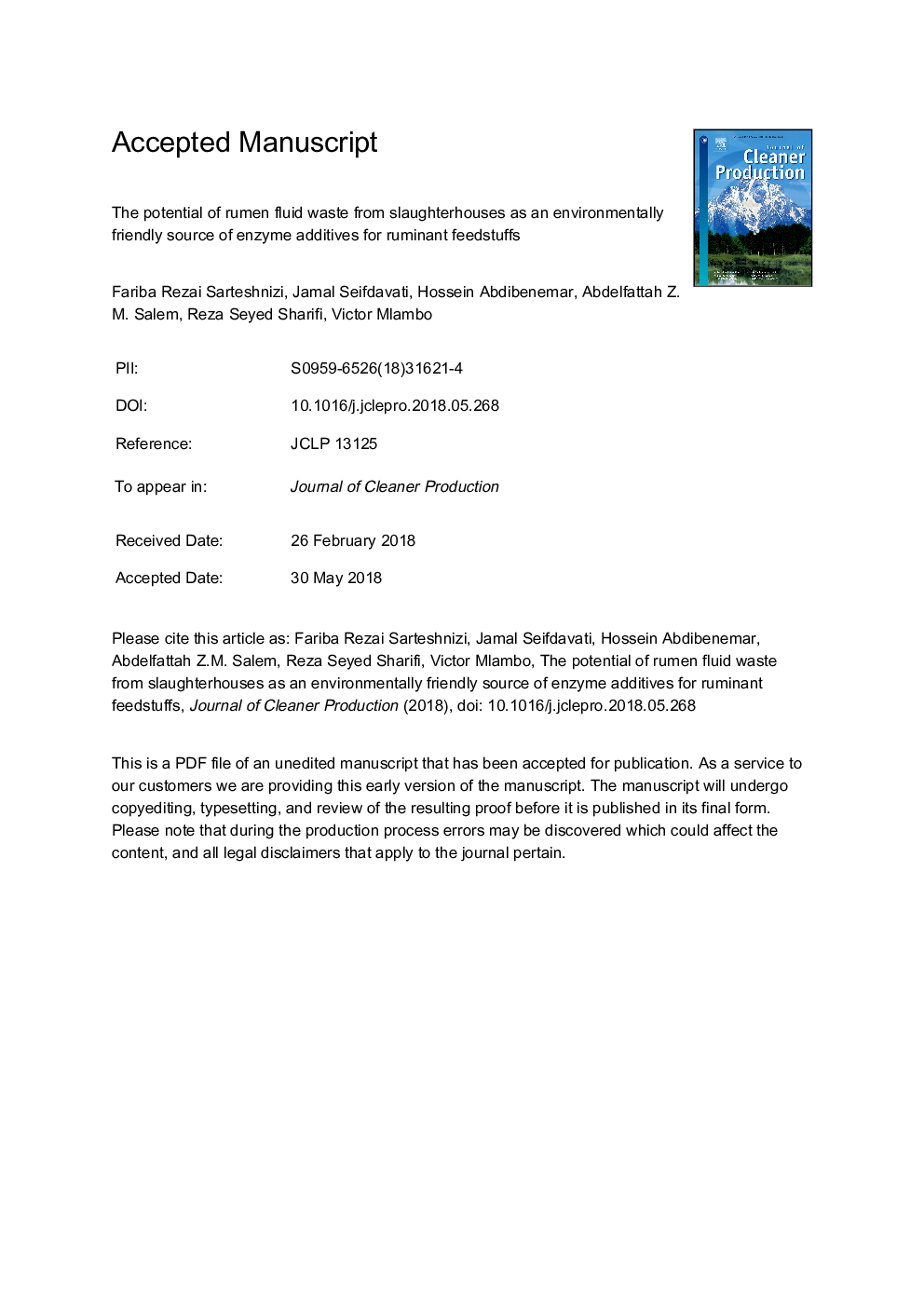| Article ID | Journal | Published Year | Pages | File Type |
|---|---|---|---|---|
| 8094380 | Journal of Cleaner Production | 2018 | 27 Pages |
Abstract
Rumen fluid disposal from slaughterhouses represents a major environmental challenge due to the presence of high levels of ammonia and phosphorus. The loading of these limiting nutrients into the soil and aquatic systems triggers eutrophication. Fortunately, the fluid is also rich in fibrolytic and other enzymes that could, alternatively, be used to enhance feed utilization in animals. Therefore, the aim of this study was to evaluate rumen fluid as a potential source of exogenous feed enzymes using a variety of test substrates. Hydrolytic enzyme activities of carboxymethyl cellulase, α-amylase and microcrystalline cellulase (avicellase) were measured in the rumen fluid to determine its enzymatic capabilities. Centrifuged and sonicated rumen fluid was used to pre-treat milled corn grain, barley grain, soybean meal, common vetch grain, bitter vetch grain, chickling vetch grain, alfalfa hay and common vetch straw substrates at 0, 1, 2, 3, or 4â¯mL per 100â¯g dry matter. Rumen fluid-treated substrates were subjected to a water solubility test and in vitro ruminal fermentation. The activities of carboxymethyl cellulase, avicellase and amylase were observed to be 377.8, 333.4 and 282 U/mL, respectively. Water solubility of dry matter in bitter vetch grain, chickling vetch grain, common vetch grain and soybean meal increased linearly with level of rumen fluid treatment. The highest solubility was observed in substrates treated with 4â¯mL rumen fluid per 100â¯g dry matter (Pâ¯<â¯0.05). With the exception of common vetch grain, other feeds had the highest (Pâ¯<â¯0.05) biogas production at 24 and 48â¯h when pre-treated with 3 and 4â¯mL rumen fluid per 100â¯g dry matter. Pre-treatment of feeds with rumen fluid significantly (Pâ¯<â¯0.05) improved total fermentable fraction of corn grain, bitter vetch grain, chickling vetch grain, alfalfa hay and common vetch straw. However, digestible organic matter and metabolizable energy of common vetch grain were not influenced by rumen fluid pre-treatment. These results showed that rumen fluid has the potential to be used as an environmentally friendly source of exogenous feed enzymes that enhance feed utilization in ruminants.
Related Topics
Physical Sciences and Engineering
Energy
Renewable Energy, Sustainability and the Environment
Authors
Fariba Rezai Sarteshnizi, Jamal Seifdavati, Hossein Abdi-benemar, Abdelfattah Z.M. Salem, Reza Seyed Sharifi, Victor Mlambo,
